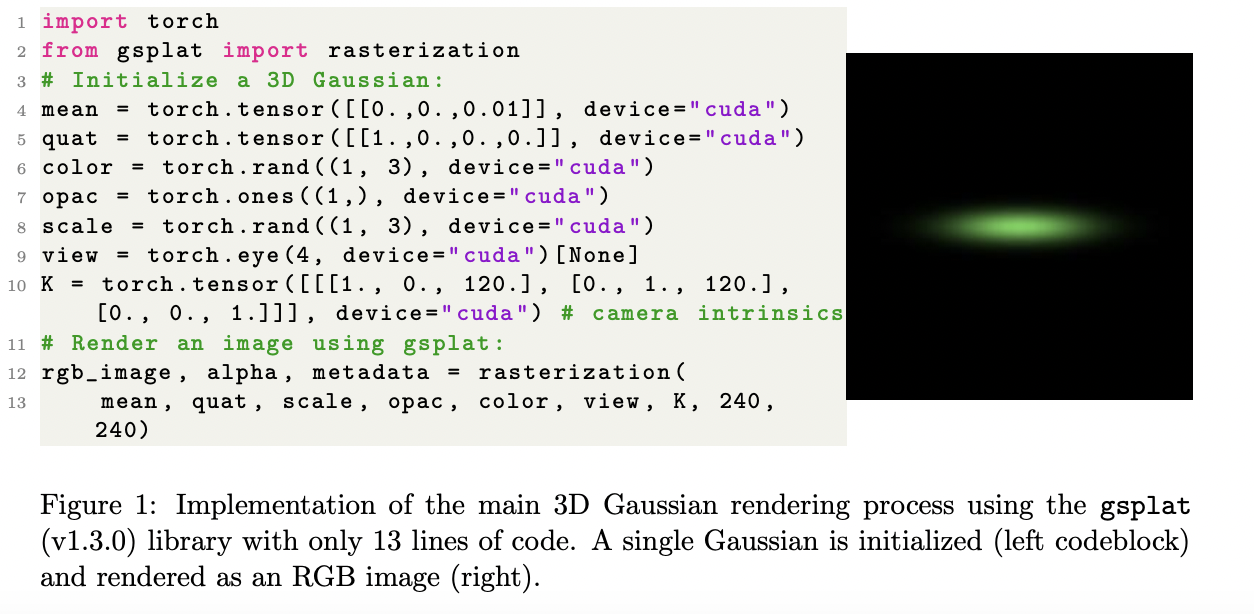
Gaussian Splatting: Optimizing 3D Rendering with gsplat Library
Revolutionizing 3D Rendering
Gaussian Splatting, a 3D rendering technique using 3D Gaussian functions, enhances rendering speed and quality. Compared to traditional methods like NeRF, it excels in rendering dynamic and large-scale scenes with high visual quality.
Challenges and Solutions
Challenges in memory usage and training speed were addressed by researchers, as they developed gsplat, an open-source Python library. It integrates with PyTorch, optimizing CUDA kernels to improve memory efficiency and training time. The library also introduces features such as pose optimization, depth rendering, and N-dimensional rasterization.
Technological Advancements
gsplat implements advanced densification strategies, enabling effective control over Gaussian pruning and densification. It includes features such as gradient flow to Gaussian parameters, anti-aliasing techniques, and highly optimized CUDA operations.
Performance Gains
gsplat outperforms the original implementation of Gaussian Splatting, achieving the same rendering quality while reducing training time and memory consumption. It supports advanced features like Absgrad and MCMC methods, further improving performance in specific scenarios.
Enabling Further Research
The gsplat library aims to promote further research by providing a user-friendly, flexible API that integrates well with PyTorch.
Evolve with AI: Unlocking the Potential with gsplat
Embrace the power of AI with gsplat to redefine your company’s workflow and stay competitive. Identify automation opportunities, define KPIs, select an AI solution, and implement gradually to improve business outcomes.
Connect with Us
For AI KPI management advice, reach out to us at hello@itinai.com. Stay updated on leveraging AI through our Telegram channel and Twitter feed.
Discover AI-Powered Solutions
Explore how AI can redefine your sales processes and customer engagement. Connect with us at itinai.com to discover innovative AI solutions.

























